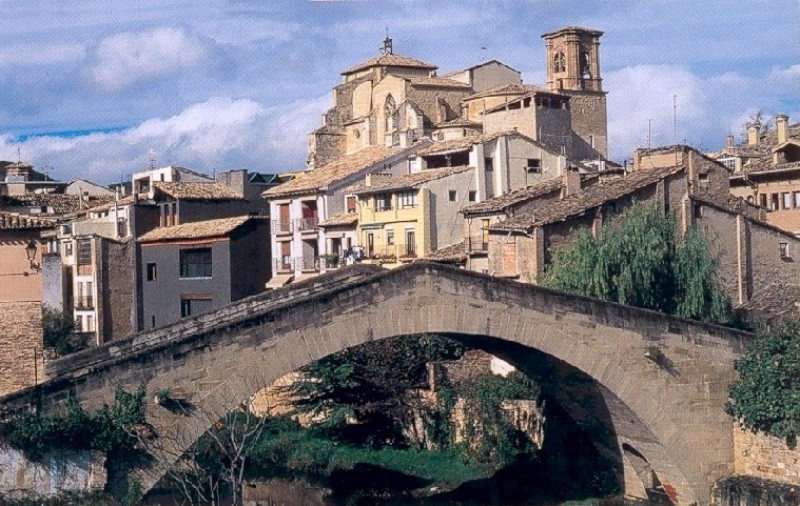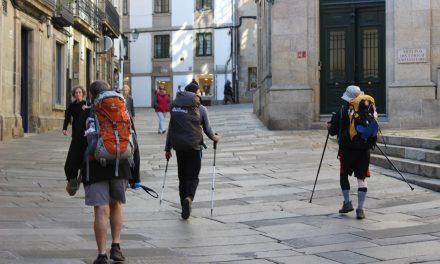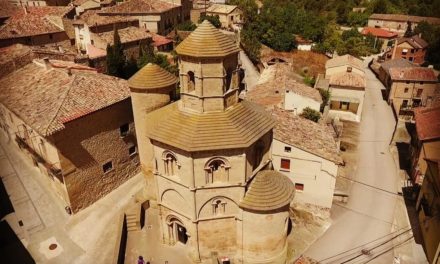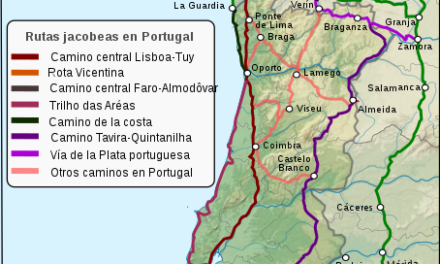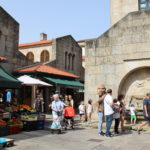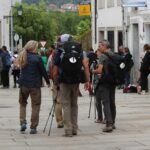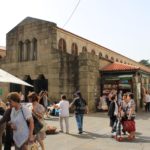Estella is a medieval town full of history, which already became linked to the Camino de Santiago around the year 1100, being cited in the Codex Calixtino as a “fertile place with good bread and excellent wine, as well as meat and fish, and supplied with all kinds of goods. ”
Towards 1090, King Sancho Ramírez de Navarra y Aragón proceeded to repopulate it and instituted it as a “borough”. By then there were probably many merchants, noblemen and members of the clergy, already established in Estella with the aim of attending to and dealing with pilgrims who came from all over Europe.
In those Romanesque times, many of the monuments of the town, churches and monasteries were created, as well as a good number of buildings for use as pilgrims’ hostels and hospitals. Estella had 6 pilgrim hospitals in the 14th century!
The most important monuments in Estella are Romanesque in style, built in the 12th and 13th centuries, when the town became the “capital of Navarrese Romanesque”. For this reason, many of its temples are worth a visit, starting with the church of San Pedro de la Rúa, which has been known as San Pedro el Mayor since the 13th century. Concerning this church, we recommend the pilgrim not to miss its façade with an extraordinary 13th century doorway, but also to visit its interior, with interesting sculptural works such as the altarpiece of the Virgen del Rosario -classicist from the early 17th century- and the beautiful Gothic sculpture of the Virgen de la O.
The other great architectural jewel of Estella is the church of San Miguel, in which much of its original 12th-century Romanesque features have been preserved. The magnificent late Romanesque apse, its five original apses that make up five vaulted chapels. Additionally, the church also contains the altarpiece of Santa Elena. We also recommend visiting the Church of the Holy Sepulchre, located in the old “Rúa de los Peregrinos”, which now goes by the name of rua de los Curtidores (or Tanners). This is also of Romanesque origin, its architecture underwent many changes, of which there are still interesting Gothic elements from the 14th century, such as the main entrance door and the polygonal apse.
If the pilgrim or visitor has time, they can extend their visit to other churches and convents, such as the convents of Santo Domingo and Santa Clara, the Romanesque church of Santa María Jus del Castillo or the Basilica of Nuestra Señora del Puy, the latter much more modern but with a valuable image of the Virgen del Puy – patron saint of the city – from the 14th century.
There are also numerous very notable civic buildings, such as the Castillo Mayor or the remains of the Zalatambor castle. These are two of the three fortresses that existed in the city during the Middle Ages, the most important of which was the Castillo Mayor, which occasionally served as a royal residence during the 13th, 14th and 15th centuries. And, finally, the Palace of the Kings of Navarra has also been preserved- an extraordinary and unique example of civic Romanesque architecture.
Photo: We have taken this image of the Commons Wikipedia project, its author is Jaume.

